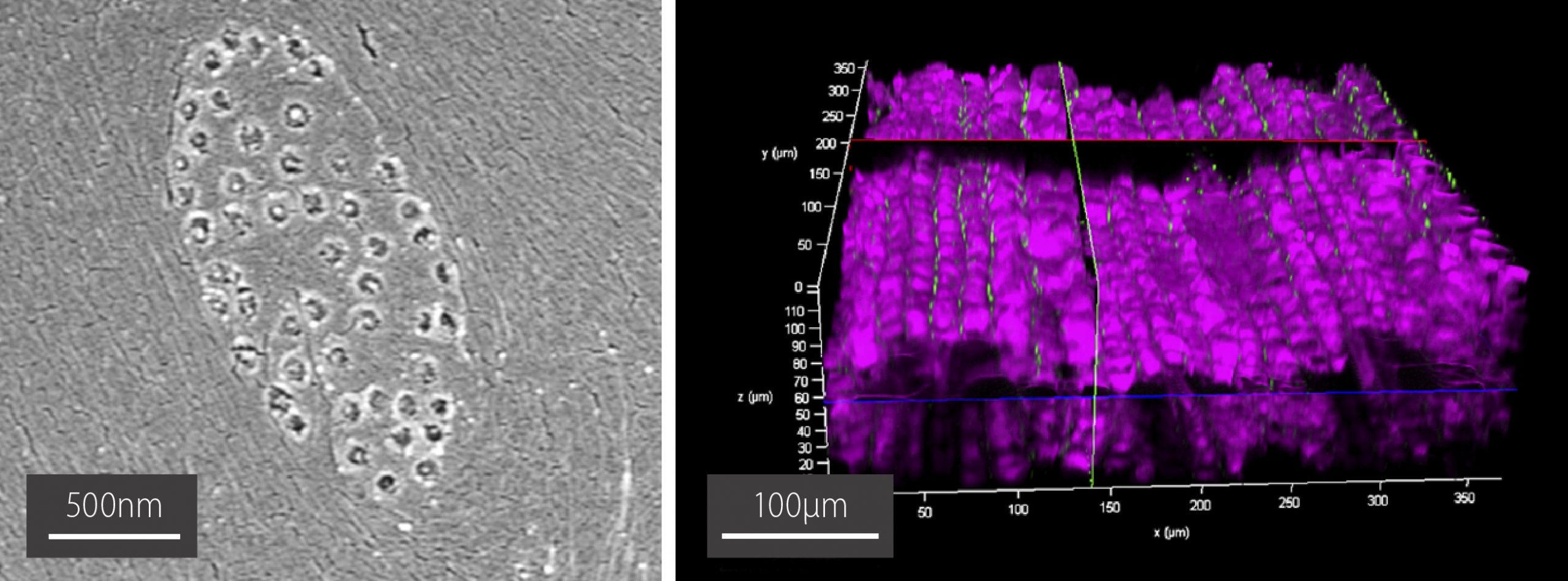Food crops use one of two photosynthetic pathways – C3 or C4 – to convert carbon dioxide into carbohydrate in the leaves. Maize and sorghum use C4, while rice and wheat, like most plants, use the less efficient C3 pathway. Integrating C4 components into C3 plants should produce food more quickly while requiring less nitrogen and water.
Florence Danila is investigating differences between these pathways, with Prof. Susanne von Caemmerer at the Australian National University (ANU) and the ARC Centre of Excellence for Translational Photosynthesis in collaboration with CSIRO and the International Rice Research Institute (IRRI) in the Philippines.

Zea mays leaf. Left: SEM image of a cluster of plasmodesmata, called a pitfield.
Right: 3D confocal image of intact tissue showing pitfields (green) within cell walls (magenta)
Plasmodesmata are very small structures in leaf cell membranes: more than 25,000 would fit across the diameter of a human hair. They enable metabolite transport between leaf cells and appear to affect photosynthetic efficiency. Counting plasmodesmata has been difficult because traditional 2D transmission electron microscopy (TEM) cannot capture the randomly distributed plasmodesmata in a single image.
Ms Danila combined scanning electron microscopy (SEM), carried out in the AMMRF (now Microscopy Australia) at ANU, with 3D immunolocalisation by confocal microscopy. Her subsequent visualisation of the 3D distribution of plasmodesmata revealed that C4 leaves have up to nine-fold more plasmodesmata than C3 leaves. This could be helping C4 plants to achieve their high photosynthetic efficiency. This data is essential for developing strategies to introduce aspects of C4 photosynthesis to C3 food crops.
F. Danila et al., 2016 The Plant Cell June 10.
November 27, 2016